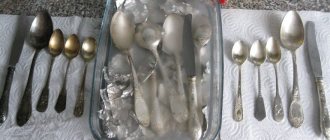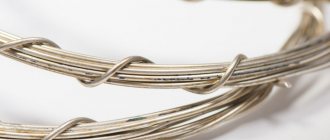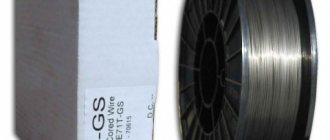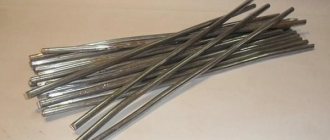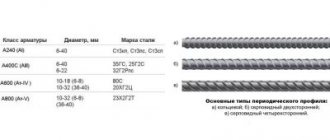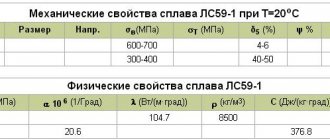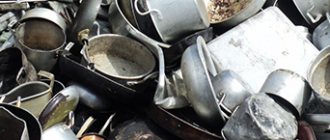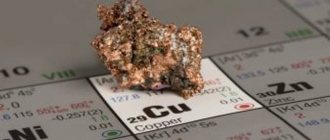Composition of gold alloys
Ligature is a metal that is part of an alloy with gold. The chemical and physical properties of the alloy depend on the volume of pure gold, the quantitative and component composition of the alloy.
The following metals are most often used as alloys:
- silver - lowers the melting point, increases ductility and malleability.
- copper - increases hardness while maintaining ductility and malleability, reduces anti-corrosion properties, which is why it is often used in combination with silver;
- nickel - imparts magnetic properties, increases the hardness, malleability and castability of the melt;
- palladium - increases the melting point while maintaining malleability and ductility;
- platinum - increases elasticity and melting point, in combination with palladium improves anti-corrosion properties;
- ruthenium - increases strength, in combination with iridium increases wear resistance;
- osmium - increases hardness, elasticity and gives the alloy refractoriness;
- cadmium - reduces the melting point, maintains malleability, increases fragility;
- zinc - increases fluidity and fragility, reduces the melting point.
Gold-containing alloys are marked with Cyrillic letters depending on the alloys included in their composition, for example:
- Pl - platinum;
- Evil - gold;
- Wed - silver;
- Pd - palladium;
- Kd - cadmium;
- M - copper;
- N - nickel;
- C - zinc.
Nuances of use
The coating for jewelry alloys is special - made of galvanic gold or rhodium. They are applied to the finished decoration on top. Can be used for any group of alloys. During the production of jewelry alloys, elements such as zinc, cadmium, or palladium may be used. In high-quality alloys, additives should not exceed 10%.
Feature: there should be a lot of silver in the alloy.
The reason is that the mass for making jewelry becomes more plastic. The shade becomes lighter. If the silver content is 30% or more, the color of gold can be changed to white, light yellow or greenish. The gold content in the alloy cannot be 100%. The quantity can be determined from the sample. If it costs “916” this means that the product contains only 91.6% precious metal. The remaining components are ligatures. The choice of the appropriate option depends on what kind of decoration or product a person wants to receive in the end. This is how copper in the alloy allows you to achieve the effect of red gold. There are many different alloys, so you need to choose them carefully. ◄ Back to news
Gold alloy colors
The color of a gold alloy is influenced by its components; depending on the ligature, the gold alloy acquires the following colors:
- yellow - an alloy of gold with silver and copper;
- white - the following alloys are used: manganese, nickel, palladium;
- black is the result of the oxidation of gold with cobalt;
- red - alloy with copper;
- blue is the result of the fusion of iron and gold;
- green - an alloy of gold and silver with the addition of cadmium;
- purple - gold with the addition of palladium, cobalt and aluminum.
White gold
Traditional gold is yellow in color. Therefore, many people wonder where the names “white gold” and “black gold” came from? Everything is much simpler than it might seem - ordinary gold is simply mixed with materials that can discolor it. Such metals include platinum, palladium or nickel. The output is a shiny material, which will be called “white gold”. And “black” is usually called oil.
Among all three metals, palladium is used to obtain the most precious and expensive alloy of gold and silver. With its help, a special white color is obtained, and the connection of metals is easy to process. When it comes to base white gold, it means that nickel was used to obtain it, the resulting gold alloy will have a pale yellow color. This compound is used for only one purpose - to make a white gold product cheaper.
Gold alloys
To imitate gold in jewelry and costume jewelry, use:
- aluminum bronze (aural, aufir, aufor) - a golden-yellow alloy consisting of nine parts of copper and one part of aluminum;
- batbronze - an alloy of tin and bronze, used as gilding and for casting for artistic and industrial purposes;
- batmetal - a zinc alloy for making tableware;
- Hameltonmetal is an alloy of 66.7% copper and 33.3% zinc, used for applying “gilding” to industrial products;
- goldin - an alloy of copper and aluminum for the production of jewelry;
- Mannheim gold is an alloy imitating the color of gold, consisting of 83.6% copper, 9.4% zinc and 7% tin;
- durametal - a golden-bronze alloy of aluminum, zinc and copper;
- mosaic gold - imitation of native gold from 34% zinc and 66% copper;
- English gold (similor, pinchbeck, tombak) - an alloy of zinc and copper, which has high corrosion resistance and ductility, is used for enameling and “gold plating”;
- French gold (oraidé) - an alloy of 80% copper, 15% zinc, 5% tin for making jewelry;
- platinor - imitation gold from 6% zinc, 9% nickel, 10% silver, 18% platinum and 57% copper.
Jewelry alloys: what is it?
Jewelry alloys are usually understood as a composition of several metals, one of which is precious - gold, silver or platinum. According to the standard, these metals should be at least 75%, ideally up to 98%. Additional components are: silver, copper, as well as more expensive ones - palladium, platinum. Alloys allow you to achieve an original and visually attractive shade. Variations of colors and shades are varied - from rich red gold to light yellow, pink and even greenish.
Compounds of several metals are actively used by craftsmen to make expensive items and jewelry for frequent use. They are used to make products with precious inserts and stones. Among them: rings of different sizes, bracelets, massive necklaces and cufflinks.
Jewelry alloys include compounds made from ferrous metals. Iron-carbon alloys with additions of chromium and nickel are actively used for the manufacture of stylish and expensive jewelry. Similar alloys are used to imitate white gold or platinum coating.
Sell gold
Another option that can be used to create high-quality jewelry alloys is compositions with stainless steel or surgical metal. Such options are ideal for products in grunge or modern style. Such alloys do not darken and are not subject to corrosion. When made correctly, jewelry is visually indistinguishable from precious jewelry (gold, silver or platinum). Feature: increased resistance to moisture. It is necessary to protect the product from interaction with iodine or cosmetics. Alloys are easy to process.
Gold and its alloys
Gold is perhaps the only metal that will never lose its popularity. For many centuries, this amazing precious metal has had an irresistible power over man.
Every year, jewelry designers and manufacturers set fashion trends in gold jewelry, including one or another shade of this precious metal. But gold is not just fashion, but, above all, a symbol of beauty and harmony.
Gold is the only metal that, in its pure form, has a bright yellow color. It is a soft, malleable, ductile and malleable metal. One of the most valuable properties of gold is its chemical resistance. That is why gold is the most “noble” of the entire group of precious metals. In addition, the shape and structure of gold molecules are unique: they can be plate-like, round, or needle-shaped.
Due to its beauty and ductility, gold is one of the main materials in jewelry production. Pure gold in jewelry serves as the basis for precious alloys and for gilding. When different metals are added, gold changes color from red to white. This allows jewelers to create products that can highlight the individuality of the owner and the sophistication of the gemstone.
Why don't jewelers use gold in its pure form?
The addition of various metals to pure gold is essential for the strength and longevity of the finished jewelry. In addition, the metals added to gold determine the shade of the alloy, its ability to reflect light and other characteristics.
Gold alloys
In Russia, the amount of gold in gold alloys is controlled by the state. Metals found in gold alloys include silver, copper, palladium, platinum, cadmium and zinc. The characteristics of the final product depend on what metal and in what proportion is added to the alloy.
Gold samples
The amount of pure gold content in the alloy can be determined by the sample stamped on the product.
In Russia, a metric standard is used: its value indicates the number of grams of pure noble metal in one kilogram of alloy. 958 standard contains up to 96.3% pure gold. This alloy includes silver and copper as alloying components. It is very resistant to external influences, retains polish well, but is very flexible. 958 gold has a rich, bright yellow hue. It is mainly used to make wedding rings and pendants. 750 standard is the second most popular gold alloy. It contains up to 75.5% of noble metal, and other components are silver, platinum, palladium, nickel, copper. This alloy is durable and highly polished, so 750 gold items are durable and have a beautiful shine. 585 is the most popular alloy in jewelry production. It contains up to 59% pure gold and includes shares of silver, palladium, nickel, copper, and zinc. 585 gold is quite hard and durable, it practically does not tarnish. The range of shades is wide - from white, red and yellow to various shades of green, depending on the proportion of metals added. 500 and 375 samples are practically not used in jewelry production. 375 standard is usually called a gold-containing alloy of silver and copper. Such gold tarnishes quite quickly in air, which significantly limits its use. Despite the large palette of possible shades of gold, the most popular are still yellow, red and white gold.
Yellow gold
Its intense color most closely resembles that of native gold, which has long been used to create truly royal jewelry.
But pure gold is not very practical jewelry: due to its softness, products made from it are not suitable for everyday wear. The addition of a ligature significantly increases the wear resistance of gold products. 585 yellow gold allows jewelers to make jewelry of varying degrees of complexity. At the same time, they remain wear-resistant and do not lose their attractiveness.
Red gold
Red gold is obtained by adding an alloy containing some copper and zinc to the precious metal. The more copper is added to the alloy, the more intense the red hue the finished product acquires. If up to 10% palladium is added to the alloy, this gives the gold an even deeper red hue. Conversely, a small amount of silver in the alloy softens the red color, making it more noble. Jewelers value red gold for its exceptional strength, which allows them to create airy, openwork jewelry without fear of deformation. Red gold rings and pendants, created at the end of the 19th century, still retain their beauty and elegance.
White gold
For several years now, white gold products have been very popular on the jewelry market.
It is distinguished by its noble shine, perfect whiteness and exceptional strength. White gold best emphasizes the sophistication and elegance of jewelry, ideally framing any precious stones. It highlights their natural color without distracting attention from their shape or the splendor of their cut. No matter how large a white gold product is, it will never look provocative. The majestic nobility and solemnity of white gold jewelry can be worn for any occasion. The assortment of our online store includes a wide range of products made of red, white and yellow gold of 585 and 750 assay values - rings, earrings, bracelets and much more.
About samples and gold alloys
If we subtract 585 grams of gold from 1000 grams of alloy, which is indicated by the fineness, then the remaining 415 are other types of metals that are included in the alloy.
Most often, silver, copper or platinum, as well as cadmium, zinc, and palladium are used for the alloy. The color shade and properties of the final gold alloy depend on the concentration of impurities. The alloy with silver gives the metal greater softness, with colors ranging from white to yellowish-green. The higher the silver content (its share can reach up to 60%), the lighter the gold.
Copper with gold makes the alloy hard and gives the metal a reddish tint - this is the so-called “red gold”. But the alloy can be susceptible to rust, so silver is often included in it.
There are also cadmium alloys, which are quite brittle and not suitable for the jewelry industry. The higher the proportion of cadmium, the more grayish the alloy becomes. The presence of zinc makes gold fluid and also very brittle. The color can reach a greenish tint, the fusibility is very low.
The choice of additives for the alloy with gold is based on the requirements for the final product. If it is necessary to maintain physical characteristics, copper and silver parts are added, resulting in a shade from yellowish to red. To increase fusibility, you will need palladium, platinum or nickel, which will help avoid corrosion. This creates a range of shades of gold - it comes in a variety of colors (yellow, reddish, white, pinkish, greenish). This choice of options allows you to make decorative products with a wide variety of aesthetics.
Areas of use
Copper alloys play a key role in meeting modern social needs - in the production of renewable energy, healthcare, high-efficiency energy devices, and communications. Here are some examples:
In the manufacture of ventilation, heating and air conditioning systems, copper alloys help reduce the labor intensity of manufacturing and assembling air conditioners, reduce their weight, reduce their size, increase the efficiency of the devices, and reduce refrigerant consumption.
In construction and architecture, copper alloys improve the appearance and expressiveness of buildings, and increase their resistance to floods and flooding. The use of copper alloys meets the important requirements of modern building design, which require the use of recyclable and environmentally friendly materials, thereby effectively protecting the environment.
In the electric power industry, copper alloys are used, ranging from the production technology of high-voltage wires and microcircuits to powerful generators and computers. Their role in matters of optimal distribution and generation of energy, including from renewable sources, is increasing.
The efficiency of using copper-based alloys increases with the introduction of recycling processes for substandard devices that contain parts made from these materials in their design.
General properties of copper-based alloys
The characteristics of copper alloys have always been adapted to suit specific industrial applications and high-tech products. This is achieved through an alloying process where two or more different metals are added to the main component of the alloy - copper. By combining copper with other metals, a range of copper alloys can be produced to solve any problem facing technology and society.
The general properties of the compounds under consideration are:
- High electrical conductivity.
- High heat capacity.
- Ease of formation of strong chemical compounds.
- Sufficient chemical inertness when working in damp or chemically aggressive environments.
- Attractive presentation.
The use of copper alloys instead of pure copper reduces the cost of finished products and reduces tension in the consumption of these products, since copper resources have already been largely explored and are being intensively produced. We also note that the metallurgy of copper alloys is characterized by an increased level of toxicity of production processes.
Causes of chemical changes in gold alloy
Often gold tarnishes or darkens - this is due to exposure to air particles with impurities with which gold reacts. To avoid such a change in appearance, metal is used for jewelry purposes in a ratio of 1 to 3 to other components.
The best and most resistant to reactions is 750 gold. Also, the metal can darken from chemicals with which it comes into contact, from cosmetics and household chemicals. For proper storage and care of gold items, boxes, boxes and special cleaning liquids with napkins are used.
At the Gold Reserve company you can buy gold coins at a favorable price. Discounts
when purchasing
gold coins from 200 grams
.
Application of brass
This copper-zinc material is malleable and tough; thanks to these qualities, it is actively used in forging, mechanical engineering and other fields. Under the blows of an anvil or hammer, brass takes any shape. Depending on the scope of application of brass, the composition of the alloy as a percentage varies in accordance with the following markings:
- L80, L85, L90, L96 - instrument elements, chemical and thermal mechanisms, coils, etc.
- L68 - stamped parts.
- L70 - quill for the chemical industry.
- L60 - thick-walled fittings, machine springs and nuts.
- L63 - elements for the automotive industry, condenser tubes.
- LAZH60−1−1 - spare parts for sea vessels.
- LA77−2 - capacitor devices for sea vessels.
- LAN59−3−2 - elements of chemical equipment, sea vessels and electrical machines.
- LN65−5 - condenser and manometric pipes.
- LZhMa59−1−1 - spare parts for aircraft and marine vessels, bearing shells.
- LMts58−2 - hardware, nuts, fittings.
- LO90−1, LO62−1, LO70−1, LO06−1 - condenser pipes for heating equipment.
- LMtsA57−1−1 - elements and spare parts for river and sea vessels.
- LS74−3, LS63−3 - bushings and clock mechanisms.
- LK80−3 - corrosion-resistant products.
- LANKMts75−2−2.5−0.5−0.5 - springs and pressure tubes.
- LMsh68−0.05 - capacitor collectors.
Brass remains the most sought after and popular alloy, whatever its composition. If the production technology is followed, it will not rust, blacken or oxidize.
Methods of obtaining
Two processes have found practical application - electrolysis and hydrometallurgy. An alloy containing copper is prepared electrolytically as follows. The starting material is pure cathode copper, the properties of which depend on a number of variables - the concentration of sulfuric acid and copper sulfate, the type and amount of alloying additives, electrolyte temperature, current density and frequency of cleaning the electrodes. After precipitation, the final product is washed to remove all traces of electrolyte. Next, the semi-finished product is annealed in a reducing atmosphere, after which the powder is sintered and pressed into the required shapes (sometimes after pressing, the product is rolled). The process is characterized by high homogeneity of finished products in terms of density and strength.
The starting material for the hydrometallurgical process of producing copper alloys can be primary or secondary copper (copper scrap). The base metal is leached with sulfuric acid or ammonia solutions, and the saturated solution is separated from the residue by filtration. Copper is precipitated from solution by hydrogen reduction under pressure. During reduction, 90...95% of the alloy is deposited in the form of a powder, which is then pumped into a centrifuge, where separation occurs. The wet copper powder is dried in a reducing atmosphere and ground, adding the required alloying elements. Further operations are performed in the same sequence as in the previous version.
